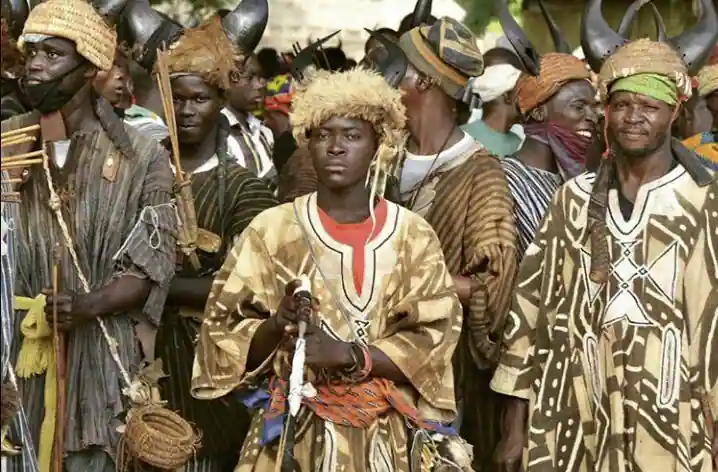The Dagomba culture is a rich and vibrant cultural tradition that has been passed down through generations in Northern Ghana.
The Dagomba people are an ethnic group that has lived in the region for centuries, and their cultural practices and beliefs have played an important role in shaping the region’s history.
Their Music & Dance
One of the most important aspects of the Dagomba culture is music and dance. Music and dance play a central role in many Dagomba cultural celebrations, including weddings, festivals, and other important events.

The traditional musical instruments used by the Dagomba include the talking drum, a type of drum that can mimic the sounds of speech and convey messages over long distances, and the xylophone, a percussion instrument that is played with mallets.
Their Oral Tradition
Another important aspect of the Dagomba culture is the role of storytelling. The Dagomba are known for their rich oral tradition, and stories are passed down from generation to generation through the art of storytelling.
These stories are often used to teach important lessons and preserve cultural history, and they play a crucial role in shaping the beliefs and values of the Dagomba people.
READ ALSO: The Amazing Culture of The Rungus
Religion
Religion is also an important aspect of the Dagomba culture. Many Dagomba people practice traditional African religion, which involves the worship of spirits and ancestors, as well as the use of divination and ritual.
In recent years, however, a growing number of Dagomba have converted to Islam, and the influence of Islam can be seen in many aspects of Dagomba culture, including music, dance, and storytelling.
Their Craft & Festival
The Dagomba are also known for their rich artistic traditions, including weaving, pottery, and metalwork. Dagomba artisans are highly skilled, and their works are highly valued by people throughout West Africa.
One of the most important cultural celebrations of the Dagomba is the annual Damba festival, which is held in honor of the Prophet Muhammad’s birthday.
The festival is marked by dancing, music, and other festivities, and it is an opportunity for the Dagomba people to come together to celebrate their culture and traditions.
Another important celebration is the annual Yam festival, which is held at the end of the rainy season. The Yam festival is a time for thanksgiving, and it is marked by the harvesting of the yam crop, which is a staple food in the region.
The festival is also an opportunity for the Dagomba people to come together to dance, sing, and celebrate the end of the rainy season.
Baseline
In conclusion, the Dagomba culture is a rich and vibrant tradition that has been passed down through generations in Northern Ghana. With its focus on music and dance, storytelling, religion, and art, the Dagomba culture is an important aspect of the region’s history and a central part of the lives of the Dagomba people.
Whether it’s through the annual Damba and Yam festivals or through the everyday practices of the Dagomba people, the culture of the Dagomba continues to thrive and evolve, and it remains a vital part of the fabric of Northern Ghana.
